Text
When’s the Last Time You Checked Your Product Listings?

Product listings are easy to overlook once they’re live. But over time, what worked six months ago might not be doing the job today. Market trends shift, customer expectations change, and even small details like outdated photos or missing information can affect your sales. Checking your listings regularly is one of the simplest ways to keep your store competitive.
Review the Basics First
Start with the key elements: title, description, images, and bullet points. Are they clear? Are they still accurate? Make sure you’re not using old keywords that no longer bring in traffic. Keep descriptions simple but informative, and use photos that reflect the product exactly as it arrives to the customer.
Look at Your Reviews for Clues
Customer feedback often points out what your listing may have missed. If people are asking the same question repeatedly, that’s a sign you should add that detail to the listing. If there’s confusion about size, color, or materials, consider updating your photos or adding a size guide.
Check Mobile View
Many customers shop on their phones, and some listings just don’t display well on smaller screens. Test your listings on mobile and make sure key information is easy to find. A few adjustments can improve conversion rates without needing a full rewrite.
Connect It to Your Fulfilment Process
Your listings should reflect how the product arrives—whether it’s bagged, boxed, or bundled. If you’re using a provider for FBA Prep or 3PL Services in Australia, ensure the listing matches the final presentation. This prevents complaints and helps set the right expectations from the start.
Product listings aren’t set-and-forget. A regular review keeps your store fresh and trustworthy, while small updates can lead to better conversion rates and fewer returns.
If you need help making sure your products are prepped and packed to match your listings, we offer FBA Prep and 3PL Services in Australia designed for e-commerce sellers.
Contact us here to learn more.
0 notes
Text
Orders Slowed Down?
youtube
A dip in sales can actually be a great opportunity to step back and review how your fulfilment is running. If you’re spending too much time packing, dealing with delays, or managing things that could be automated or outsourced, this slower period gives you the breathing room to make improvements. Small changes now can make a big difference when orders start picking up again.
https://www.easyfbaprep.com.au/order-slow-down-rethink-fulfilment/
fulfilment #ecommerce #warehouse #easyfbaprep
0 notes
Text
What Did Your Customers Actually Like This Year?
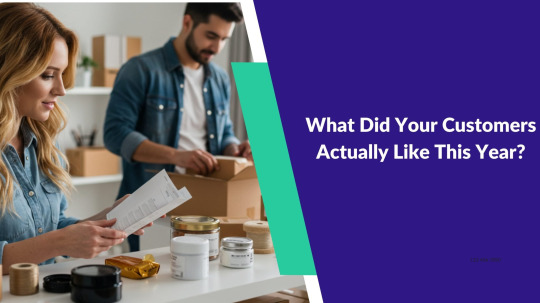
Selling online is often about moving forward, but sometimes the smartest move is to pause and reflect. What did your customers actually enjoy this year? What products got the best response? These answers can help guide your next decisions, if you’re restocking, launching new items, or refining your marketing.
1. Review Your Best Performers
Start with the products that sold well and kept moving throughout the year. These are likely your most reliable items, even if they weren’t flashy. Check your sales data and see which products held steady. Look for patterns in what people returned for or reordered. This is valuable insight into what your audience values.
2. Read Between the Lines
Product reviews and customer messages reveal a lot. Take note of what people mention, from packaging and delivery speed to how useful they found the product. These small details can shape how you present your listings, update your product copy, or adjust your prep process for better results.
3. Drop or Improve Slow Movers
Not every product is going to be a winner. If certain SKUs slowed down or caused issues, now’s a good time to decide if they should stay in your range. It may not be about cutting them entirely, it could just mean refreshing the listing, adjusting pricing, or rethinking how they’re prepared and shipped.
4. Let This Guide Your Next Steps
Use what you’ve learned to shape your strategy. May it be placing a bigger order on a popular item or updating your FBA Prep process to improve efficiency, small improvements now can make a big difference down the line.
When you understand what your customers truly liked, it’s easier to move forward with purpose. If you need support behind the scenes, we offer 3PL services in Australia and specialise in FBA Prep to help e-commerce sellers like you stay focused on what matters most.Contact us here to see if we’re the right fit for your business.
0 notes
Text
Halfway There! Are You On Track with Your Goals?

Running an e-commerce business often feels like a race that never slows down. Between managing inventory, fulfilling orders, and keeping customers happy, it can be hard to step back and check if you’re actually moving in the right direction. This is a good moment to pause and ask yourself: am I on track with the goals I set for my business? And if not, what needs to change?
Check What You Set Out to Do
Start with your original goals. What did you hope to achieve this year? Whether it was launching new products, improving your delivery process, or growing your revenue, now is the time to take stock. Write down what has been completed, what’s in progress, and what has been left behind. Be honest with yourself. This isn’t about being perfect. It’s about getting clear.
Make Adjustments if Needed
If you’re behind, that’s not failure. It just means some areas need more attention. Look at what’s working and what’s not. If certain products are underperforming, review your listings, pricing, or photos. If operations are slowing you down, it might be time to simplify your systems or get outside help. Focus on small improvements that bring the biggest impact.
Build on What’s Working
If you’re on track or even ahead, take a moment to recognise that. Then ask yourself where you can double down. Can you improve your stock levels for bestsellers? Refresh listings that haven’t been touched in months? Prepare for an upcoming sales event? Small steps now can help avoid stress later.
A clear check-in gives you the chance to reset your focus, realign your goals, and make better decisions moving forward. You don’t need to overhaul everything, just get clear on what matters most right now.
If you need support with prep, storage, or shipping, we run a warehouse in Australia designed for e-commerce sellers.
Contact us here to see if it’s the right fit for your business.
0 notes
Text
Keeping Your Supply Chain Smooth: How a Local 3PL Supports Sellers Around the Globe
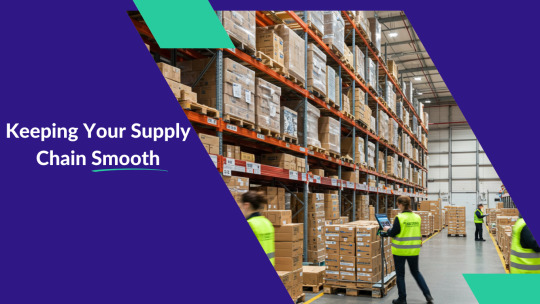
Sourcing products from various suppliers can lead to unexpected challenges, especially when your stock reaches Australia. Delays, miscommunication, and confusion can quickly escalate into bigger problems. A local 3PL warehouse Australia can help you stay ahead of any potential issues and keep your supply chain smooth and efficient.
The Challenge of Global Sourcing
Importing products from around the world can sometimes result in disruptions—delays at customs, storage issues, and shipping delays. Without a reliable logistics partner, these issues can slow down your ability to fulfill orders quickly and accurately, impacting customer satisfaction.
How 3PL Services Keep Things Moving
Once your stock lands in Australia, a trusted 3PL services provider can make all the difference. From handling customs clearance and unpacking to offering secure, organised storage, a professional 3PL can ensure everything moves swiftly from port to warehouse—and then to your customers.
Faster Fulfilment and Better Accuracy
The speed and accuracy of your fulfilment process are crucial to meeting customer expectations. With a local 3PL, you can rest assured that your orders are being picked, packed, and dispatched efficiently. Plus, many 3PL providers are familiar with the requirements of major platforms like Amazon, ensuring that your products are FBA-ready if needed.
Final Thoughts
Global sourcing presents great opportunities, but it also requires careful handling when products reach Australia. By partnering with the right 3PL warehouse Australia, you can simplify your logistics, improve delivery speeds, and focus on growing your business.Need help keeping your supply chain running smoothly?
Contact us here to discover how our 3PL services in Australia can support your logistics needs.
0 notes
Text
Too Much Left Over After EOFY? Smart 3PL Strategies for Excess Stock

EOFY sales can be a big win—but what happens when you’re left with more stock than you expected? For many Australian businesses, excess inventory isn’t just a storage problem—it ties up cash flow and warehouse space. The good news is, your 3PL partner can help turn this challenge into an opportunity.
The Cost of Holding Unsold Inventory
Excess stock after June 30 can quietly eat into your margins. Whether it’s seasonal goods that won’t sell until next year or slow movers that missed the mark, the longer it sits, the more it costs—especially if you’re managing it in-house.
How a 3PL Warehouse in Australia Can Help
A reliable 3PL warehouse Australia based can offer short- and long-term solutions to lighten the load. From discounted pallet storage to assisting with bundling, repackaging, or kitting—your 3PL can help create new ways to move stock without slashing prices. They can also manage outbound logistics to secondary channels or donation partners if needed.
Creating Room for What’s Next
Clearing out excess stock isn’t just about saving money—it’s about making space for what’s next. With mid-year stock rotations, new product launches, and restocks for Q3, it’s essential your logistics setup is ready. Offloading or reworking slow stock through your 3PL keeps your warehouse running efficiently.
Final Thoughts
If you’ve just wrapped up EOFY sales and found yourself with leftover stock, you’re not alone. But leaving it sitting in your warehouse doesn’t help your bottom line. Working with the right logistics partner lets you focus on selling while they handle the practical side of storage and distribution.
Need help clearing excess stock or streamlining your post-EOFY storage?Contact us here to see how our 3PL warehouse services in Australia can support your business through every sales cycle.
0 notes
Text
Winter Stock or Wasted Space? Preparing Your Inventory for Australia’s Mid-Year Sales

With cooler months settling in, many Australian businesses are already preparing for mid-year sales. But before you order more stock, it’s worth asking: is your current inventory working for you—or just taking up space? This is the perfect time to reassess storage needs, sales projections, and how your logistics setup supports your sales strategy.
Seasonal Inventory Planning
Unlike the holiday rush, winter sales can be unpredictable. Some items move quickly, others don’t. Having too much stock can lead to higher storage fees, while having too little means missed revenue. That’s where a strategic approach to inventory—and the right support from your logistics partner—makes a difference.
The Role of 3PL Services
Reliable 3PL services can help you adjust to seasonal trends. With real-time stock visibility, flexible space, and efficient pick-pack systems, a 3PL warehouse helps you stay lean without sacrificing speed. Instead of holding slow-moving stock in-house, you can move it into professional storage and free up space for high-turnover items.
Why It Matters Now
Mid-year promotions, EOFY clearances, and stocktake sales all compete for attention in May and June. If your storage is at capacity or disorganised, it slows down dispatch and frustrates customers. A good 3PL can streamline that process, reducing shipping delays and improving overall order accuracy.
Final Thoughts
Whether you’re a small eCommerce brand or a growing wholesaler, staying flexible with your inventory approach can save money—and lead to more sales. Don’t let disorganisation hold you back during one of Australia’s biggest retail windows.
Thinking of outsourcing inventory management?Contact us here to learn how our 3PL warehouse solutions in Australia can support your seasonal sales strategy.
0 notes
Text
Are Your Tariff Codes Up to Date? What Australian Importers Should Check Before EOFY
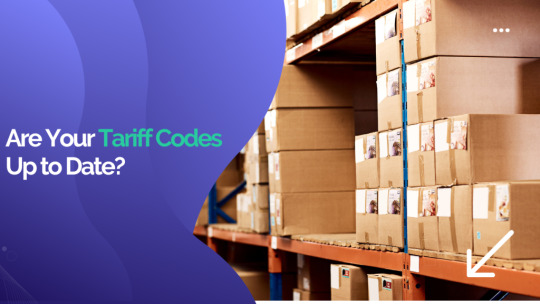
With the Australian financial year drawing to a close in June, businesses are doing their annual check-ins. While inventory and expenses are usually top of mind, there’s one detail that often gets missed—tariff codes. If you’re importing goods, now is the time to make sure everything’s in order.
Why Tariff Codes Matter
Tariff codes (also known as HS codes) determine how your products are taxed when entering the country. If the code is outdated or incorrect, your business could be paying more duty than necessary—or worse, underpaying and risking penalties from customs.
The EOFY Advantage
EOFY is a smart time to review your classifications and processes. A good 3PL warehouse Australia based can help you audit your records and identify potential missteps. They’re also often up-to-date with changes in Australian customs regulations and can assist with ensuring the documentation you submit is accurate and complete.
How 3PL Services Can Help
This is where using reliable 3PL services Australia wide can be a huge advantage. Partnering with a 3PL means you don’t have to shoulder this alone. They’re already handling similar goods across clients, so they bring experience and efficiency. If you’re doing everything in-house, small errors can slip through the cracks—especially if your team isn’t across the nuances of customs rules.
Final Thoughts
If you’re an Australian business importing goods regularly, consider whether your current process is still working for you. A small investment in smarter logistics now can save you time, money, and headaches when it comes time to lodge EOFY paperwork.
At this time of year, every cost counts. A quick check-in with your logistics partner could lead to long-term savings. If you’re not currently using a 3PL or think your current setup could be improved, it’s worth exploring what 3PL services Australia offers—especially from teams who understand the local landscape and compliance requirements.
Need help reviewing your setup before EOFY?Reach out to us here and let’s see how we can support your logistics needs.
0 notes
Text
youtube
If your shipments don’t meet Amazon’s prep standards, they can be delayed, rejected, or hit with extra fees. That means wasted time, higher costs, and unhappy customers. Here are common FBA prep mistakes to watch out for—and how to avoid them.
https://www.easyfbaprep.com.au/amazon-fba-prep-mistakes-that-could-get-your-inventory-rejected/
fba #fbaprep #amazonfba #ecommercetips #easyfbaprep #3plservicesaustralia #3plservice #3plwarehouse #3plwarehouseau
0 notes
Text
Orders Slowed Down? It Might Be the Best Time to Rethink Fulfilment
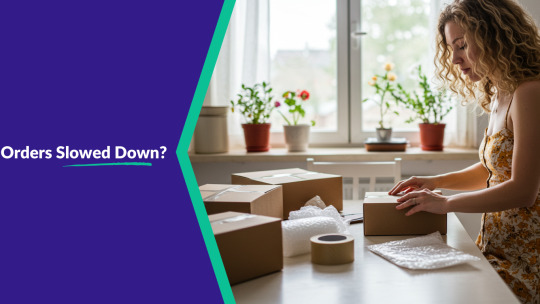
Sales naturally dip during certain parts of the year, especially between major sales events. But if orders have slowed down for you lately, this can actually be a great opportunity—not a setback. It’s the perfect time to step back and take a good look at how your fulfilment is really working behind the scenes.
When you’re busy packing orders or managing restocks, it’s easy to put off reviewing how your backend operations are performing. But when things are quieter, you’ve got breathing room to ask the important questions:
Are orders going out on time?
Are you spending too much on storage or packaging?
Is your current setup going to hold up when sales ramp up again?
We often hear from sellers who only start thinking about switching to a 3PL after their system breaks down. But acting early—when volumes are lower—makes for a much smoother transition. You can test out a new warehouse partner, review your SKUs, get packaging sorted, and clean up your inventory without the pressure of peak season.
This is also a good time to look at what you’re holding in storage. Are there slow-moving SKUs tying up space? Is your stock organised in a way that makes prep and dispatch efficient? Small changes now can make a big difference in how smoothly your business runs when things pick up again.
At Easy FBA Prep, we support both Amazon sellers and direct-to-consumer brands with storage, prep, and fulfilment. If you’re using this quieter period to tidy up operations, we’d be happy to help you build a system that’s ready for whatever comes next.
Thinking of making a change? Reach out to us now.
0 notes
Text
Why ‘Growing Pains’ in Fulfillment Can Kill Customer Loyalty (And How to Prevent It)
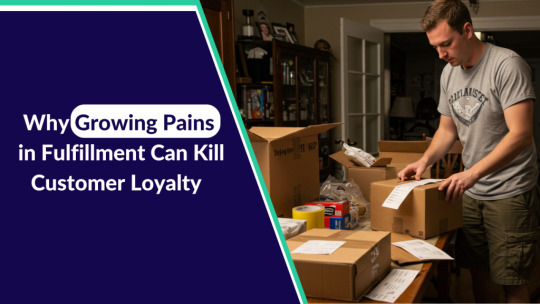
When orders start rolling in faster than expected, it’s a great sign your business is growing—but it can also lead to some serious fulfillment headaches. And if customers start noticing delays, mix-ups, or poor packaging, that initial excitement can quickly turn into frustration.
Even if you’ve built a loyal customer base, fulfillment problems can chip away at that trust. People might love your product, but if the delivery experience is unreliable, they may not come back.
What Do Fulfillment Growing Pains Look Like?
Delays in dispatching orders – You’re not intentionally slow, but the volume starts piling up.
Stockouts or overselling – Inventory tracking falls behind, and customers end up waiting longer or missing out.
Inconsistent packing – Some orders arrive well-packed, others don’t. Or worse, items are missing.
Lack of updates – Customers aren’t sure when their order is on the way or who to contact if there’s a problem.
None of these issues are uncommon—but they can hurt customer satisfaction if they happen too often.
How to Prevent It
The best time to address fulfillment growing pains is before things go off track. Here’s what can help:
Work with a 3PL that understands your business and can handle a range of order volumes.
Keep your inventory well-organised so incoming and outgoing stock moves smoothly.
Have a clear plan for customer communication, especially if there are changes to dispatch timelines or stock availability.
Review your packing process to make sure each order is accurate and well-presented.
You don’t need to chase lightning-fast shipping to keep customers happy—you just need a fulfillment process that’s consistent and reliable.
If your fulfillment is starting to feel stretched, we can help take some of the pressure off. Reach out to us to see if we’re the right fit for your next phase of growth.
0 notes
Text
What Are Amazon Removal Services – And Do You Need Them?
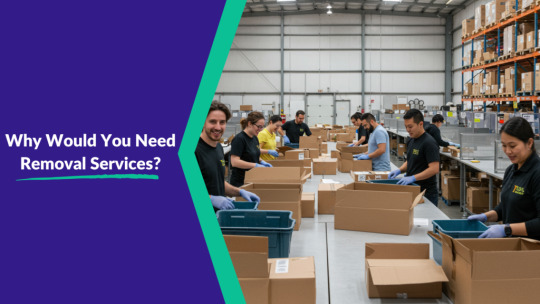
If you sell on Amazon, chances are you’ll eventually run into excess stock, returns, or stranded inventory. That’s where Amazon removal services come in.
Put simply, a removal service is when inventory is taken out of Amazon’s fulfillment centers. This can be done by either having it returned to you or disposed of entirely. While Amazon offers its own removal option, many sellers prefer working with a 3PL for more flexibility and better control over what happens to their goods.
Why Would You Need Removal Services?
There are a few common scenarios:
Overstocked items: If products aren’t selling fast enough, Amazon may hit you with long-term storage fees.
Unfulfillable inventory: Damaged or returned items can’t be sold as new and need to be removed.
Listing or account issues: If Amazon deactivates a listing, your stock becomes stranded.
Product changes: You may want to relabel, repackage, or rework items before sending them back in.
In these situations, a trusted removal service helps you recover as much value as possible from the goods.
How Does It Work?
Here’s the typical process:
You request a removal order through Seller Central and choose the return address—your 3PL warehouse, for example.
We receive the goods, inspect them if needed, and follow your instructions. That could mean relabeling, bundling, prepping for resale, or even disposing of unsellable stock.
We help you take the next step, whether that’s sending the items back to Amazon or handling direct-to-consumer shipments.
With removal services handled by your 3PL, it’s easier to keep your supply chain moving without bottlenecks.
Please note: We only offer Amazon removal services to customers who are also using our other 3PL services, such as FBA prep, B2B fulfillment, or storage. If you’re already working with us in those areas, just let us know you’d like removal support as well—we’ll take care of the rest.
If you’d like to learn more or get started, contact us here.
0 notes
Text
Amazon FBA Prep Mistakes That Could Get Your Inventory Rejected
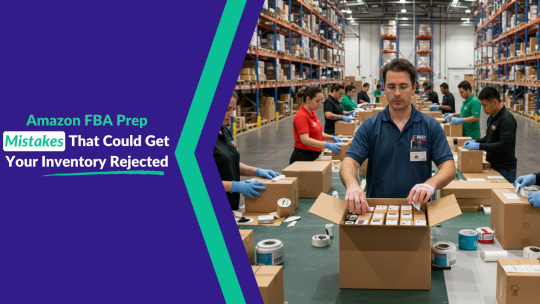
Amazon’s fulfillment centers have strict requirements for how inventory should be prepped and shipped. If your shipments don’t meet their standards, they can be rejected, delayed, or even subject to extra fees. That means lost time, extra costs, and frustrated customers.
Here are some common Amazon FBA prep mistakes that could cause issues—and how to avoid them.
1. Incorrect Labeling
Every unit sent to Amazon must have a scannable barcode (either an FNSKU or manufacturer barcode, depending on your settings). If labels are missing, unreadable, or placed incorrectly, your inventory could be refused or mixed up with another seller’s stock.
✅ Fix: Ensure each unit has the correct label, placed in a visible area without covering important product details.
2. Improper Packaging
Amazon requires specific packaging for different product types. For example, fragile items need bubble wrap, liquids must be double-sealed, and small loose products must be poly-bagged. If packaging isn’t up to standard, Amazon may refuse the shipment or repackage it—at your expense.
✅ Fix: Follow Amazon’s packaging guidelines to avoid damage, contamination, or loss.
3. Exceeding Box Weight or Dimensions
Amazon has strict rules on box sizes and weight limits. If a box is too large or heavy, it could be rejected or split into multiple shipments, leading to delays and extra costs.
✅ Fix: Keep individual boxes under 23kg and ensure dimensions comply with Amazon’s requirements.
4. Missing or Incorrect Shipment Plans
Every FBA shipment must be registered in Seller Central before it reaches an Amazon fulfillment center. Sending unplanned or incorrectly listed shipments can lead to refusals or misdirected inventory.
✅ Fix: Always double-check your shipment details, box contents, and routing instructions before sending.
Need Help with FBA Prep?
Avoid costly mistakes and ensure your shipments meet Amazon’s strict requirements with expert FBA prep services. At Easy FBA Prep, we handle labeling, packaging, and compliance so your inventory gets accepted without delays.
0 notes
Text
A Customer in Perth, Another in Sydney—Are You Losing Sales Due to Slow Shipping?
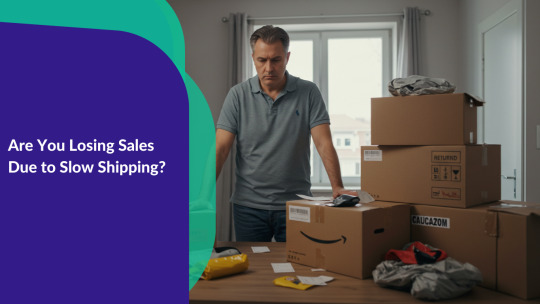
Customers don’t like waiting. When they place an order, they expect fast and reliable delivery. If your products take too long to arrive, you could be losing sales without even realizing it.
Shipping delays can lead to cart abandonment, negative reviews, and fewer repeat customers. With major retailers offering same-day or next-day delivery, small to mid-sized businesses need to ensure they’re not falling too far behind in meeting customer expectations.
Why Shipping Speed Matters
Let’s say your warehouse is based in Sydney. Customers on the east coast might get their orders quickly, but what about buyers in Perth? Standard shipping across the country can take days—or even longer if there are carrier delays. On the flip side, if your stock is located in WA, customers in Sydney or Melbourne might be experiencing the same issue.
While some customers will wait for a product they really want, others won’t. They might abandon their cart and look for a seller who can get it to them faster. Even worse, if they go through with the purchase but feel shipping took too long, they might leave a bad review, hurting future sales.
How Can You Improve Your Shipping Strategy?
You can’t control how fast couriers operate, but you can take steps to minimize delays on your end. Some businesses manage this by:
✅ Storing inventory in multiple locations to reduce shipping distances ✅ Using a fulfillment partner with efficient packing and dispatch systems ✅ Reducing handling times so orders leave the warehouse faster
If you’re relying on a single warehouse and frequently seeing long shipping times to certain areas, it may be time to rethink your logistics.
Work with an Australian-Based 3PL
At Easy FBA Prep, we help businesses streamline their fulfillment by providing Amazon FBA prep services as well as B2B and B2C order fulfillment. With our Australian-based warehouse, you can store inventory, pack orders efficiently, and ensure they’re shipped out as quickly as possible.
0 notes
Text
Avoid FBA Delays: The Importance of Accurate Product Dimensions
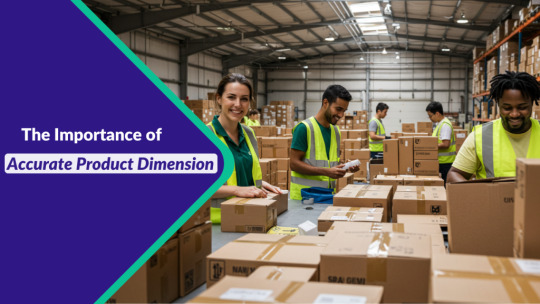
When listing a new product on Amazon Seller Central, one small mistake can cause big problems—entering incorrect product dimensions. This seemingly minor oversight can lead to delays, additional costs, and even rejected shipments at Amazon Fulfilment Centres. Here’s why getting it right from the start matters.
The Impact of Incorrect Dimensions
If the product size you enter doesn’t match the actual dimensions of your inventory, Amazon may need to re-measure your items. This extra step can slow down the inbound process, delaying your stock from being available for sale.
In some cases, incorrect dimensions can even lead to your shipment being redirected to another fulfilment centre, further increasing delays and potential costs. If the discrepancy is significant, Amazon may reject an entire pallet, leading to extra logistical headaches and a longer wait before your products are ready for customers.
What You Need to Do
To avoid these issues, follow these steps:
Double-check dimensions: When creating a new product listing, ensure that all three dimensions (length, width, height) are entered correctly.
Verify existing listings: If you are the only seller of an ASIN and need to update the weight or dimensions, take these steps:
Contact Selling Partner Support to request an update.
If you have inventory for the product, you may need to sell existing stock before Amazon processes the new measurements.
Stay Ahead of Fulfilment Issues
Taking the time to enter accurate product dimensions from the beginning helps ensure a smoother inbound process, reduces delays, and prevents unnecessary complications. For more details, check out Amazon’s support pages on Product size tiers and List products for Fulfilment by Amazon.
A little extra attention upfront can save a lot of time and frustration later!
Need help streamlining your FBA process? Contact us today to see how we can support your business.
0 notes
Text
You’re Ready to Sell on a New Platform—But Can You Handle the Extra Orders?
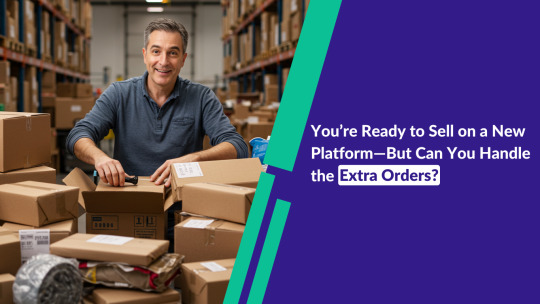
Expanding to a new marketplace like Walmart or eBay is an exciting step. More customers, more visibility, and more sales potential—it all sounds great. But with growth comes added complexity. Can your fulfillment process keep up with the increased demand?
More Marketplaces, More Challenges
Selling on multiple platforms means managing orders from different sources, each with its own rules and customer expectations. Keeping up with these can be overwhelming if your fulfillment process isn’t built to handle the extra load.
Some challenges sellers face when expanding include:
Managing inventory across multiple sales channels
Meeting different shipping requirements for each marketplace
Keeping up with increased order volume without delays
Handling returns efficiently
Avoiding overselling or stockouts due to poor inventory tracking
If your fulfillment process is already stretched thin, adding another marketplace could lead to late shipments, errors, and frustrated customers.
Can a Fulfillment Partner Help?
If fulfillment is holding you back from expanding, outsourcing to a third-party logistics (3PL) provider could be the solution. A 3PL can help streamline storage, order processing, and shipping across multiple platforms, making it easier to scale your business.
Some benefits of working with a fulfillment partner include:
Centralized Inventory Management – Sync stock across all marketplaces to avoid overselling.
Consistent Order Processing – Get support to help manage increased volume efficiently.
Marketplace Compliance – Meet each platform’s fulfillment and shipping requirements.
More Time to Focus on Growth – Spend less time on logistics and more on sales, marketing, and product development.
Set Yourself Up for Success
Expanding to a new marketplace should help your business grow, not overwhelm it. If you’re adding a new sales channel, make sure your fulfillment process is ready.
At Easy FBA Prep, we help sellers manage fulfillment for Amazon FBA, Walmart, eBay, and more. If you’re looking for support to handle extra orders, contact us today to see how we can help.
0 notes
Text
Your Supplier Just Offered You a Huge Discount for Bulk Orders—But You Have No Place to Store Them
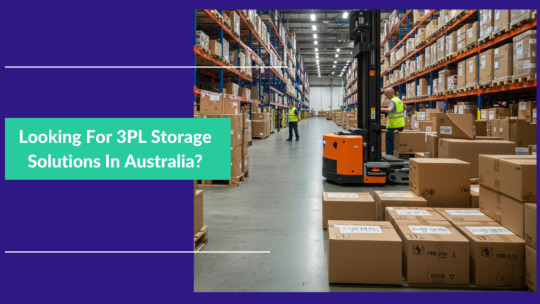
Suppliers often offer excellent discounts for bulk purchases, making it a smart way to lower your per-unit costs and increase profit margins. However, storing that extra inventory can be a challenge, especially if your current space is already full. When storage is tight, you might have no choice but to decline bulk deals—missing out on significant cost savings.
Why Warehouse Space Matters
Having too much inventory without a proper storage solution can create operational issues. Overstocked spaces can lead to damaged goods, inefficient packing, and delays in order fulfillment. A cluttered storage area makes it harder to locate products quickly, increasing the risk of shipping errors and frustrated customers.
At the same time, not having enough inventory on hand can leave you struggling to keep up with demand. If a supplier offers a bulk deal on a best-selling product, turning it down due to space constraints could mean lost sales and higher restocking costs later.
How a 3PL Can Help
Instead of renting additional storage space or trying to manage warehouse operations yourself, partnering with a third-party logistics (3PL) provider offers a flexible and cost-effective solution. A 3PL warehouse can store your bulk inventory, keeping your stock organized and ready for shipment.
With a 3PL, you don’t have to worry about storage limits restricting your ability to take advantage of supplier discounts. You can order in bulk with confidence, knowing that your products are securely stored and handled by professionals.
Save Money While Staying Organized
A well-organized 3PL warehouse ensures that your inventory remains in top condition and orders are shipped efficiently. Most fulfillment is completed within 24 to 72 hours, though final delivery depends on shipping carriers.
If you’re looking for 3PL storage solutions in Australia, Easy FBA Prep is here to help. We provide secure storage, fast fulfillment, and the flexibility to scale your business. Contact us today to see how we can support your growth!
0 notes